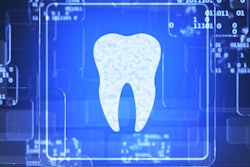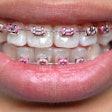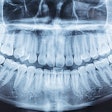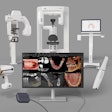
Is dentistry ready for artificial intelligence (AI)? Or rather, is AI ready to be applied to dentistry outside of academic and research settings? AI shows promise, but its use in dentistry still lags behind AI in clinical medicine, according to research published online January 3 in Dentistry Review.
While it's encouraging that dentistry is moving toward embracing AI, it is only now being applied to certain dental specialties such as orthodontics and endodontics, noted the authors, led by Dr. Mohamed Meghil, PhD, of the Dental College of Georgia at Augusta University.
Although "this technology has been applied to some of the dental specialties in the research and academic settings, it has not yet been fully introduced to dental research nor have they reached technological readiness and cost-efficiency to enter the dental market," the group wrote.
Literature search and evaluation
Meghil and colleagues collected 3,177 publications through keyword searches of literature databases such as PubMed and Medline using terms from both AI and dentistry. After excluding publications that were meta-analysis studies, conference abstracts, reviews, expert opinions, protocols, nonclinical reports, unpublished studies, or studies in languages other than English, they were able to identify a set of 28 studies that investigated the use of AI in the dental fields.
| Publications on AI in dentistry | ||||
| Field | Number of studies | Countries | Number of training datasets | Number of test datasets |
| Periodontics | 5 | Korea, Iran, Turkey, and Greece | 480 | 171 |
| Orthodontics | 8 | Japan, Korea, Iran, China, Italy, Brazil, and Colombia | 1,336 | 80 |
| Prosthodontics | 5 | Spain, China, Thailand, and Canada | 4,659 | 1,759 |
| Oral medicine | 5 | Japan, Sweden, Turkey, and Jordan | 1,151 | 68 |
| Maxillofacial surgery | 2 | Malaysia and Romania | 47 | 0 |
| Endodontics | 3 | Iran and Thailand | 142 | 103 |
For each of the studies, they presented a short summary, including the amount of training data and test data, the technology used (e.g., artificial neural network), and the results (e.g., able to predict whether to extract teeth with a success rate of 90.4%).
To come up with a uniform critical appraisal across all of the studies, Meghil and colleagues evaluated each study subjectively using the Prediction Model Risk of Bias Assessment Tool (PROBAST), a tool for assessing the risk of bias and applicability of diagnostic and prognostic prediction model studies. PROBAST is designed to evaluate the quality of studies in terms of factors such as the appropriateness of the participants, data sources, analytical methods, and conclusions.
The studies in the fields of orthodontics, prosthodontics, and oral medicine had the highest median PROBAST scores, indicating higher quality, while those in the fields of periodontics, maxillofacial surgery, and endodontics had the lowest, the researchers found.
AI has not reached its full potential
While AI is now a fairly mature technology in the field of medicine, where it is used to diagnose conditions, interpret results, and help healthcare providers achieve good treatment outcomes, it has yet to reach its potential in the field of dentistry, the authors noted.
"Further studies, including randomized clinical trials, are needed to confirm the value of this concept in dental practice with the goal of providing data-driven, high performance dental care that can rapidly improve the science, economics, and delivery of optimum treatment options for patients," they wrote.



















